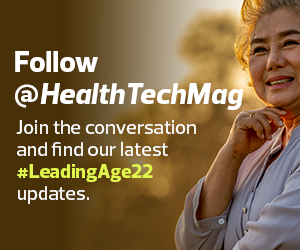Calling for Improvements to Senior Care
Earlier this year, the Biden administration announced a focus on overhauling the country’s nursing home system, and LeadingAge has met with federal leaders to share members’ experiences.
LeadingAge called for a three-pronged, governmentwide approach to nursing home improvement: address the urgent workforce crisis, fund quality care, and apply evidence-based quality improvement and measurement.
With appropriate technologies, funding and support, health IT can significantly help in all these areas. It was thrilling to see “adopt health information technology in all nursing homes” as a goal in the NASEM report, with recommendations focused on electronic health records interoperability, certification criteria, adoption incentives, workforce training and evaluation studies.
EXPLORE: Tips for senior care organizations on upgrading their network infrastructure.
To support this goal, the report advised the following:
- The Office of the National Coordinator for Health Information Technology (ONC) and the Centers for Medicare & Medicaid Services (CMS) should identify a pathway to provide financial incentives to nursing homes for interoperability-certified EHR adoption that supports health information exchanges to enhance person-centered longitudinal care. These incentives should parallel Health Information Technology for Economic and Clinical Health Act incentives for eligible hospitals and professionals.
- The U.S. Department of Health and Human Services should develop a way to measure and report on short-term health IT adoption and interoperability in nursing homes, consistent with other healthcare organizations. It should report annual results on nursing home staff, resident and family perceptions of health IT usability in Care Compare.
- CMS and the Health Resources and Services Administration should provide financial support to develop and implement ongoing workforce training, emphasizing core health IT competencies for nursing home leadership and staff, such as clinical decision support, telehealth, integration of clinical processes, interoperability and knowledge management in patient care.
- ONC and the Agency for Healthcare Research and Quality should fund rigorous studies in the near term to explore health IT’s use in improving nursing home resident outcomes; disparities in health IT adoption and use across nursing homes; innovative health IT applications for resident care; and clinician, resident and family perceptions of health IT usability.
Finally, the report calls for more short- and long-term funding for research in this domain.
GET THE WHITE PAPER: Learn how mobile workflows and smart devices elevate senior care.
The Need for Interoperability in Senior Care IT
Surely these recommendations sound familiar to long-term and post-acute care providers, especially those following LeadingAge and its Center for Aging Services Technologies. LeadingAge priorities and CAST initiatives have advocated for improving health IT in nursing homes and beyond for years.
However, I must stress that the lack of interoperability and the negative consequences it has on care quality are not unique to nursing homes. The need for interoperability verification and certification, workforce training on health IT and financial incentives reverberates throughout the aging-services sector. In fact, a recent survey conducted with Program of All-Inclusive Care for the Elderly providers revealed that EHR interoperability is a major concern.
Federal attention to these issues in aging services is critical, and the time for immediate action is now. Our advocacy efforts in the LeadingAge Aging Services Workforce Now campaign support NASEM’s recommendations to bring interoperability and health information exchange to long-term and post-acute care providers so we can provide care and services to older adults, who deserve better access to their health information, better care and better outcomes.
Keep this page bookmarked for our coverage of the 2022 LeadingAge Annual Meeting + EXPO, which takes place Oct. 16-19 in Denver. Follow us on Twitter at @HealthTechMag and join the conversation at #LeadingAge22.













